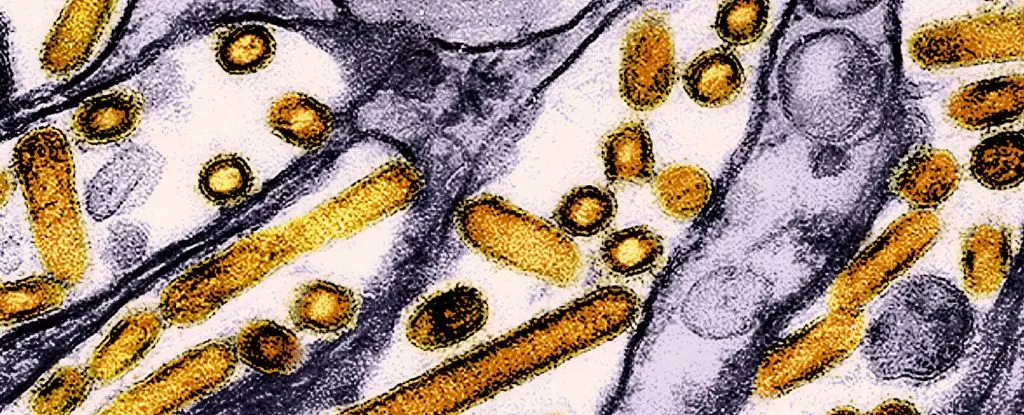The emergence of highly pathogenic avian influenza (HPAI), particularly the H5N1 strain, has become a focal point of concern for global public health in recent times. Recent studies reveal a troubling reality: instances of HPAI may be going undetected in human populations, particularly among those working closely with infected animals. This article examines this concerning issue, highlighting key findings from recent research while also discussing its implications for public health and animal welfare.
An investigation involving blood samples from 115 dairy workers across Michigan and Colorado has unveiled a startling statistic: approximately 7% of individuals tested between June and August 2024 showed the presence of antibodies linked to the H5N1 strain of bird flu. This discovery is significant as it indicates that infections may be occurring without overt symptoms or severe illness among the workforce. Remarkably, half of those who tested positive for antibodies did not report any illness, suggesting that many may have experienced mild or even asymptomatic infections.
This finding highlights both a silver lining and a potential peril. On the one hand, most dairy workers appear to be insulated from the more severe effects of the virus. Conversely, the lack of severe symptoms can create a false sense of security, leading to complacency in monitoring and preventive measures, which could lead to further spread of the virus.
Despite the current low risk to public health, experts warn that unchecked transmission of HPAI could allow the virus to evolve into more dangerous strains. A recent outbreak in Cambodia serves as a stark reminder of the potential threat posed by mutations. At least three individuals there died from a hybrid strain, comprised of genetic material from two distinct H5N1 lineages, which displayed mutations that might facilitate airborne transmission to mammals.
The concern deepens with the reporting of Canada’s first confirmed human case of bird flu, found in a teenager who is hospitalized in critical condition. Genetic sequencing indicated that this case reflects mutations enhancing human infectivity, underscoring the volatility and adaptability of the virus. Each of these incidents compounds fears about the potential for widespread outbreaks if human-to-human transmission begins, as only one prior case of bird flu has been recorded without a known animal source.
The findings from the CDC’s research remain particularly alarming when considering the working conditions of the dairy workers involved. All participants who tested positive for antibodies had direct involvement in milking cows or managing the milking parlor. Notably, none reported using personal protective equipment (PPE) recommended for engagements with HPAI-infected animals, and compliance with PPE guidelines was universally low among the workers.
The implications of this lack of adherence to safety protocols could be profound. The potential for the virus to spread within vulnerable worker populations increases significantly when proper protective measures are not in place. Therefore, a call for improved outreach and education regarding infection risks and safety practices among dairy workers is urgent. Tailoring these initiatives, particularly to accommodate the cultural and linguistic needs of the workforce, will be essential for effective dissemination of information.
In addition to human health risks, the proliferation of HPAI has precipitated drastic measures within agricultural practices, particularly for poultry. Since 2022, over 90 million domestic birds have been culled in the United States to curb the spread of the virus. Moreover, programs for vaccinating endangered species, such as California condors, have been initiated to protect them from the impending threat of transmission from wild to domestic populations.
As researchers ardently pursue the development of a human vaccine, it remains imperative for authorities and public health officials to implement ongoing monitoring programs. This includes encouraging adherence to hygiene practices during animal interaction and facilitating prompt reporting of sick or deceased birds. By fostering a culture of vigilance and proactive management, we can combat the complex web of risks posed by avian influenza.
The unearthing of HPAI antibodies among dairy workers underscores the hidden dangers that lie within our agricultural systems. As the potential for mutation and human-to-human transmission looms, it is vital that we heed the lessons from recent outbreaks. Robust prevention strategies, improved education, and continued surveillance will be fundamental in safeguarding public health and minimizing the impact of future outbreaks. It is crucial for both individuals and authorities to act now to mitigate risks and protect our communities from this evolving threat.


Leave a Reply